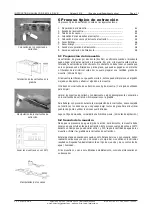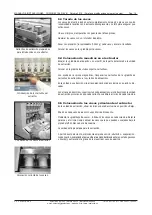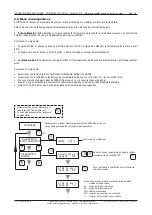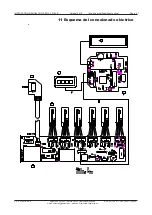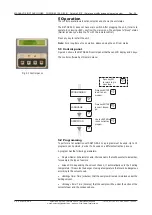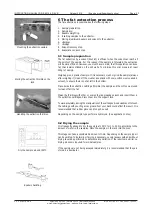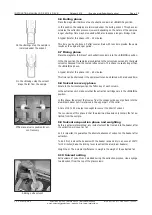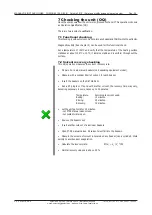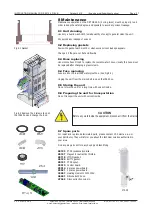
INSTRUCTION MANUAL CODE 80196 REV B
October 2019
(It can be modified without notice)
Page: 27
J
.P. SELECTA s.a.u.
Autovía A2 Km 585.1 Abrera 08630 (Barcelona) España
Tel 34 937 700 877 Fax 34 937 702 362
e-mail: selecta @jpselecta.es - website: http://www.jpselecta.es
4 Installation
Once the unit is unpacked, visually check the packing list (See 1.1) and that there
are no parts damaged during transportation. Save the packing for some days for
later sending.
4.1 Suitable location
Place the unit over a flat level and stable surface, suitable for the unit weight. No
longer that 1.5m from a water tap, waste output and power supply plug.
To work comfortably, let a free space of 50cm on each side and not least than 20cm
on the rear part.
4.2 Connection to power supply
Locate a power supply socket (rated to 16A) near the unit. Use the power cord sup
-
plied or another of similar specifications.
For safety reason the socket must have ground terminal, since the unit must be
grounded.
Before plugging on the socket, check that its voltage matches the voltage marked
on the unit plate.
4.3 Connection to tap water and waste (Fig 4.3)
Connect the water entry hose to a water tap (E). Connect the water output hose
from (S) to waste.
Do not forget the rubber white nuts on the hose’s connections.
Press plastic connections by hand. Do not use any tools.
Water pressure and temperature must be enought to cool the condensers. High cool
-
ing water temperatures lead to a poor condensation of the solvent.
4.4 Selecting the locking gasket
The unit is supplied with 2 sets of gaskets. One set is made from VITON and the
other from BUTYL. The VITON ones are factory assembled.
Note: Take care to not mix the gaskets. If the gasket material and the solvent are
no compatible, it will deteriorate in a short time.
Assembly the suitable gaskets according to this table:
Compatibility between solvent and gaskets material
Solvent
Tª(ºC)
Viton
Butyl
Acetone
130 - 150
*
Acetonitrile
140 - 160
*
Carbon Tetraclorure
120 - 185
*
Chloroform
100 - 140
*
Ciclohexane
140 - 180
*
Diclorometane
100 - 130
*
Ether di-etilic
80 - 100
*
Dioxane
180 - 200
*
Ethylate acetate
150 - 180
*
Hexane
140 - 155
*
Petroleum Ether 40-60
100 - 135
*
Petroleum Ether 40-60
120 - 160
*
Toluene
200 - 220
*
Thrichloroethylene
150 - 180
*
Fig 4.3: Inlet and outlet water con
-
nections
Fig 4.1.1: Free space on the rear part
Fig 4.1.2: Free space to let on both sides

